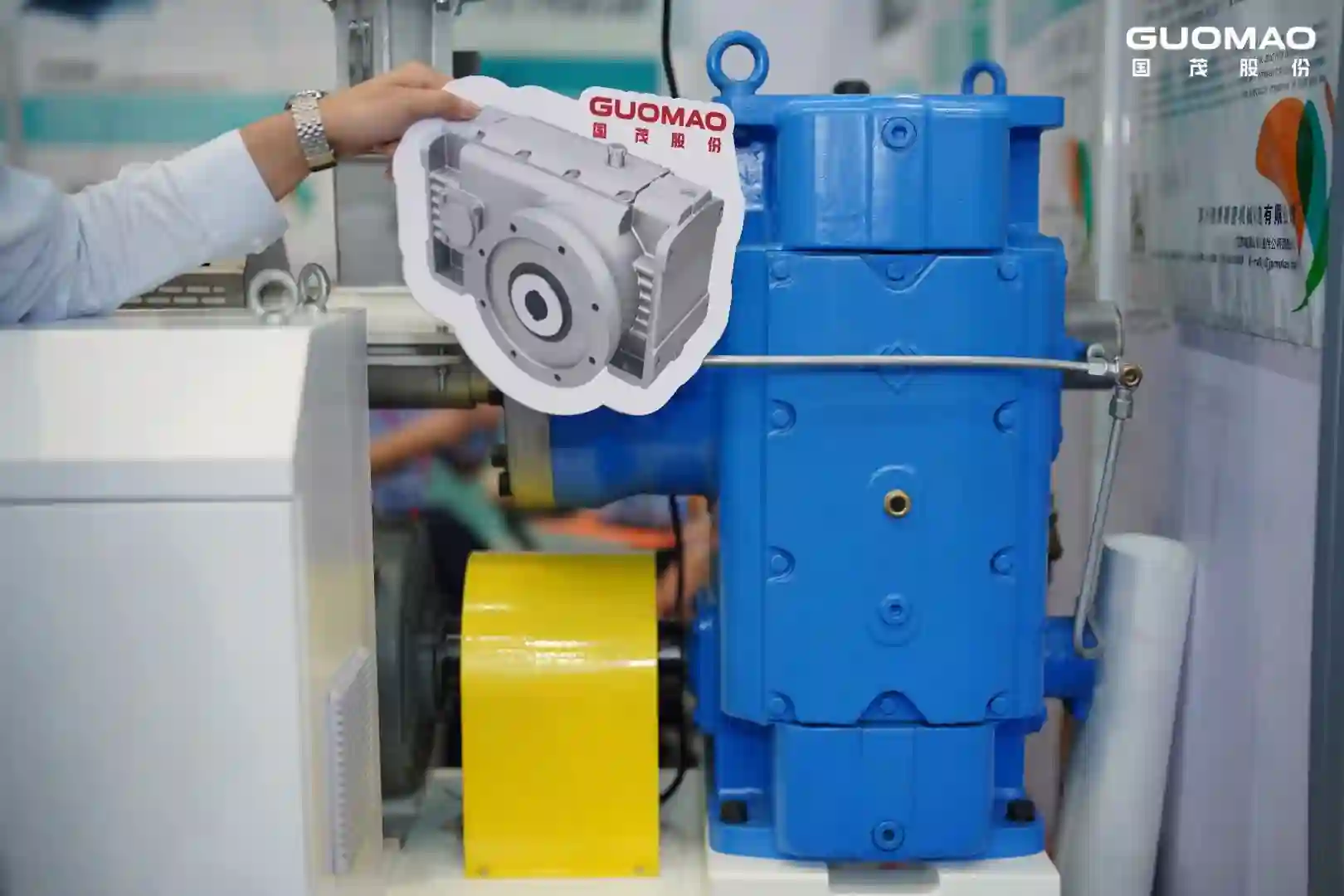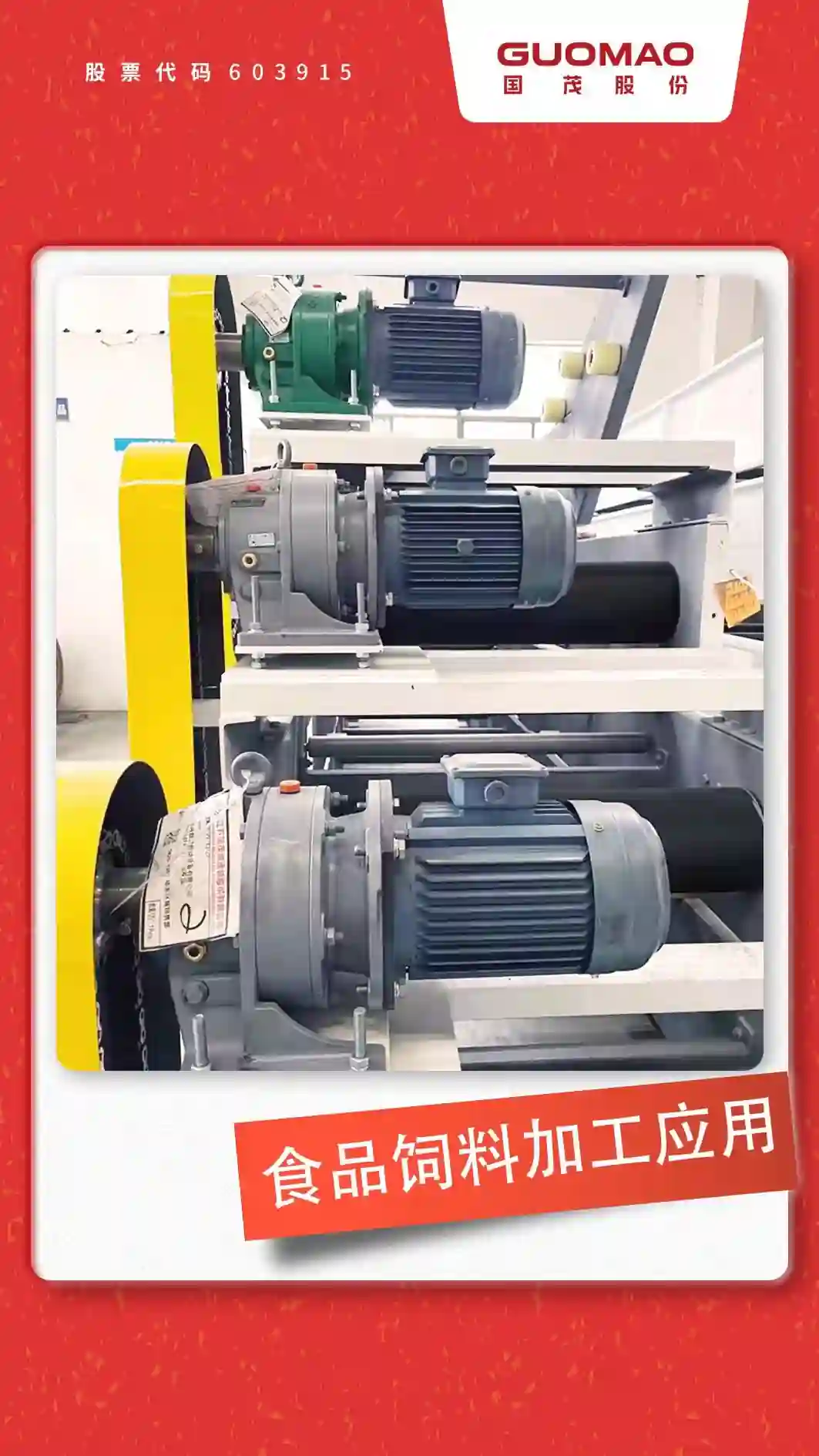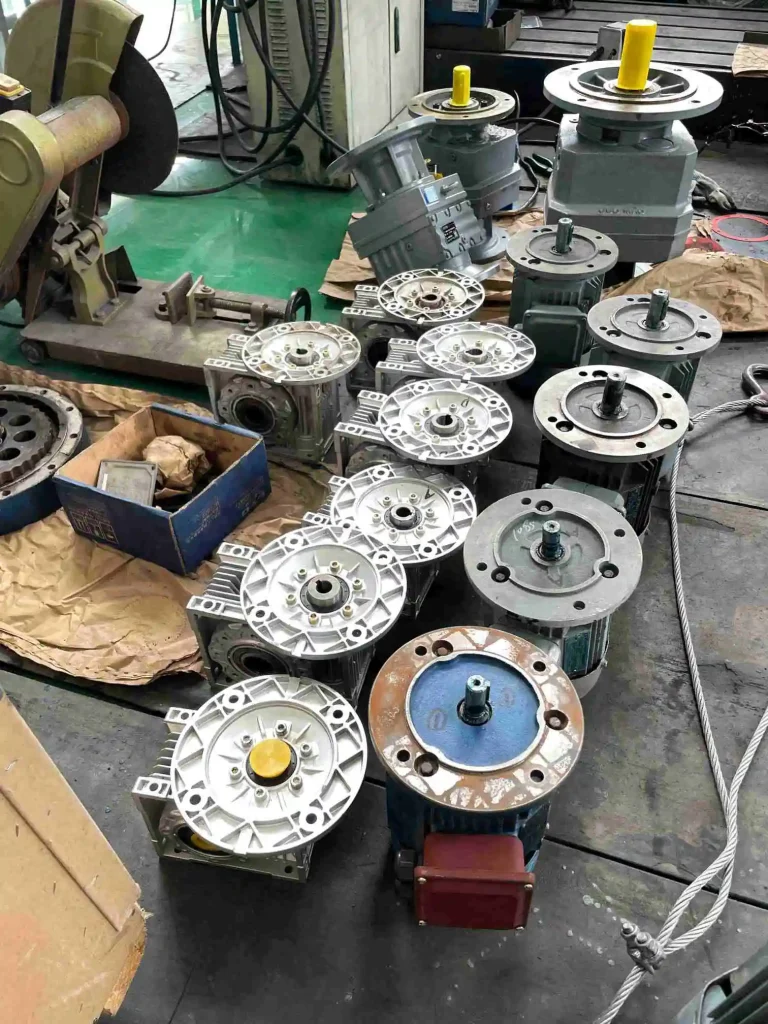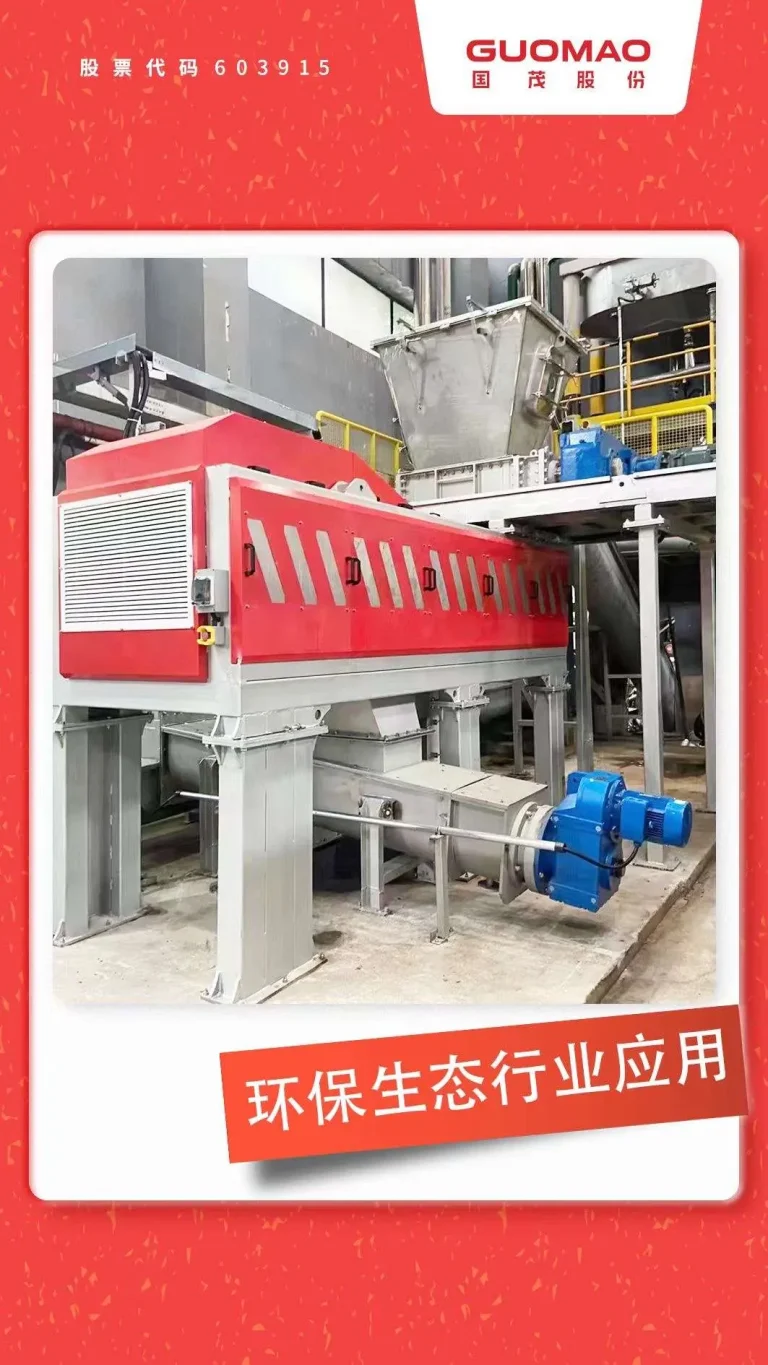¿Qué es un reductor de engranajes helicoidales y cómo mejora el movimiento robótico?
Principios clave detrás de los reductores de engranajes helicoidales
Un reductor de engranajes helicoidales es un dispositivo de precisión que reduce la velocidad del motor mientras aumenta el par. Utiliza engranajes helicoidales con dientes inclinados que se mallan bien y fácilmente. Este diseño proporciona un funcionamiento más silencioso y suave en comparación con los engranajes de corte recto convencionales.
La malla suave extiende la fuerza uniformemente a través de los dientes. Esto mejora significativamente la durabilidad y la eficiencia en aplicaciones robóticas exigentes. Las unidades de la serie GR vienen en configuraciones de una etapa, dos etapas o tres etapas. Estos permiten a los ingenieros elegir entre una amplia gama de relaciones de transmisión, adaptando todo tipo de movimientos de robot como un guante.
Cómo el diseño de engranajes helicoidales mejora la suavidad y la eficiencia
Estos dientes inclinados mantienen contacto constante a medida que giran. Esto corta sacudidas y empuja la potencia a través de súper suavemente. A diferencia de los engranajes de espolón que generan impacto, los engranajes helicoidales suprimen las vibraciones y el ruido, esenciales para los robots que requieren alta precisión.
El Motor de engranaje helicoidal de la serie GR paquetes de alta precisión, bajo ruido, alta eficiencia de transmisión, pequeño volumen, fácil mantenimiento y una larga vida útil. Estas características lo hacen muy adecuado para robots que operan en áreas sensibles al ruido o donde la estabilidad es crítica. Además, el diseño mantiene el desperdicio de energía bajo, lo que es una ventaja para los sistemas de larga duración.
Diferencias entre helicoidal y otros tipos de engranajes en robótica
Los robots usan todo tipo de engranajes - esporón, gusano, cicloidal, planetario - pero los reductores de engranajes helicoidales brillan brillantemente. Los engranajes Spur son simples en diseño pero producen altos niveles de ruido. Los engranajes de gusano cortan la velocidad una tonelada, pero pierden eficiencia por la fricción deslizante. Reductores de engranajes cicloides Son pequeños y resistentes, pero un dolor de construir.
Los engranajes de pasador cicloide se engranan con montones de dientes para mantener los temblores y el ruido pequeños. Pero cuando desea suavidad, eficiencia y una configuración sencilla, los reductores de engranajes helicoidales ofrecen un equilibrio óptimo de rendimiento, eficiencia y simplicidad para aplicaciones robóticas.
¿Por qué usar un reductor de engranajes helicoidales en aplicaciones robóticas?
Beneficios de la transmisión de torsión en robótica
Los reductores de engranajes helicoidales aumentan el par del motor mientras reducen la velocidad. Eso’ s clave para articulaciones de robot o actuadores que necesitan tanto músculo como control. Dejan que los robots levanten cargas pesadas o empujan duro sin aumentar el tamaño del motor.

Reducción de ruido y control de vibraciones en tareas de precisión
El ruido y las vibraciones pueden desechar los sensores del robot o arruinar el trabajo delicado. Los reductores de engranajes helicoidales, con su engranaje suave, mantienen estos problemas molestos al mínimo.
La alta precisión y el bajo ruido los convierten en un sueño para robots quirúrgicos, máquinas de laboratorio o trabajos que necesitan posicionamiento puntual sin interrupciones. Este ambiente silencioso asegura que los sensores se mantengan felices y las tareas se mantengan precisas, incluso en configuraciones sensibles como hospitales o salas limpias.
Ventajas de diseño compacto para sistemas robóticos integrados
Los robots operan con frecuencia en espacios confinados. Los reductores de engranajes helicoidales ofrecen una gran potencia en un paquete pequeño, gracias a sus interiores inteligentes.
Pequeño volumen capaz de manejar carga radial. Esto los hace ideales para robots móviles o brazos articulados donde el espacio es limitado pero la fuerza debe mantenerse. Su construcción compacta se ajusta cómodamente sin escatimarse en la arena, ideal para sistemas incrustados.
¿Cómo seleccionar el reductor de engranajes helicoidales adecuado para su robot?
Factores a considerar: carga, velocidad y ciclo de trabajo
Elegir el reductor de engranajes helicoidales adecuado significa dimensionar su robot’ necesidades. Compruebe la carga (par), la velocidad (RPM) y el ciclo de trabajo (con qué frecuencia funciona). Estos dan forma al engranaje’ tamaño y configuración para un rendimiento de primera clase sin estresar las piezas o cortar la vida corta.
No’ Olvidar el medio ambiente: temperaturas calientes o frías, polvo o suciedad pueden afectar a las selecciones de materiales o las necesidades de lubricante. Por ejemplo, una fábrica polvuosa podría necesitar sellos más duros para mantener las cosas funcionando sin problemas.
Compatibilidad de la relación de engranajes con las especificaciones del motor
La relación de engranajes le dice cuántos giros de entrada hacen un giro de salida. Obtener la relación correcta mantiene la energía fluyendo bien del motor al robot, evitando vibraciones demasiado rápidas o demasiado débiles.
Importancia de la exactitud de la reacción y el posicionamiento
El retroceso es el pequeño espacio entre los dientes de engranaje. En robots como máquinas de recogida y colocación o brazos CNC, incluso pequeños deslizamientos pueden convertirse en grandes golpes con el tiempo.
Los reductores de engranajes helicoidales mantienen naturalmente la reacción baja con contacto constante con los dientes. Para trabajos súper precisos, pueden asociarse con etapas planetarias o ajustes personalizados para fijar tolerancias ajustadas, manteniendo cada movimiento muerto.

¿Quién es Guomao y qué hace que nuestros reductores de engranajes helicoidales sean ideales para la robótica?
Nuestro compromiso con la ingeniería de precisión en robótica
En Guomao, nosotros’ se trata de crear engranajes de transmisión de primer nivel para la automatización moderna. Con años de inteligencia y certificación ISO9001, construimos productos que mezclan precisión con tenacidad, perfectos para la robótica.
Las piezas de repuesto se someten estrictamente al proceso de control de calidad. Esto se asegura de que cada pieza golpee marcas de alta fiabilidad antes de aterrizar en sus manos, listo para rodar en configuraciones exigentes.
Descripción general del producto: Reductores de engranajes helicoidales de alto rendimiento de Guomao
Reductores de engranajes helicoidales en línea para brazos robóticos compactos
La caja de engranajes tipo GR ofrece opciones montadas en pies y en bridas B5 con configuraciones de engranajes cónicos de una o dos etapas. Estos se deslizan directamente en los brazos robóticos donde el espacio es apretado pero el par necesita estallar, manteniendo las cosas elegantes y fuertes.
Opciones de montaje personalizables para flexibilidad de integración
Nuestros diseños modulares vienen con opciones de montaje en pie, montaje en brida (B5/B14) o montaje en eje. Esto los convierte en un cinch para encajar en cualquier marco de robot, sin importar el ángulo o el espacio.
Nuestros productos son altamente estándar, de diseño modular: los productos están conectados con diferentes tipos de motores u otros tipos de potencia de entrada. Esta flexibilidad les permite vibrar con todo tipo de configuraciones, desde pequeños bots hasta grandes plataformas.
Preguntas frecuentes
P: ¿Para qué se utiliza un reductor de engranajes helicoidales en robótica?
R: ralentiza la velocidad del motor mientras aumenta el par, clave para el control preciso en las juntas del robot o los actuadores.
P: ¿Cómo se diferencia un reductor de engranajes helicoidales de otros tipos, como gusano o planetario?
R: Es’ son más suaves y eficientes que los engranajes de gusano, más silenciosos que los engranajes de esporón y más simples que los sistemas planetarios.
P: ¿Puedo usar un reductor de engranajes helicoidales en diseños robóticos compactos?
A: Totalmente. El pequeño volumen les permite adaptarse a espacios estrechos sin perder energía, gracias a configuraciones flexibles.
P: ¿Qué debo considerar al seleccionar un reductor de engranajes helicoidales?
R: Compruebe la carga, la velocidad, el ciclo de trabajo, el entorno, las necesidades de reacción y la coincidencia del motor para el mejor ajuste.
P: ¿Los reductores de engranajes helicoidales ayudan a reducir el ruido en los sistemas robóticos?
R: Sí. Sus dientes inclinados se mallan suavemente, cortando el ruido para lugares tranquilos como laboratorios o hospitales.







